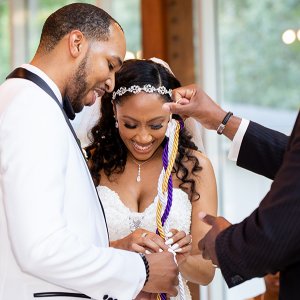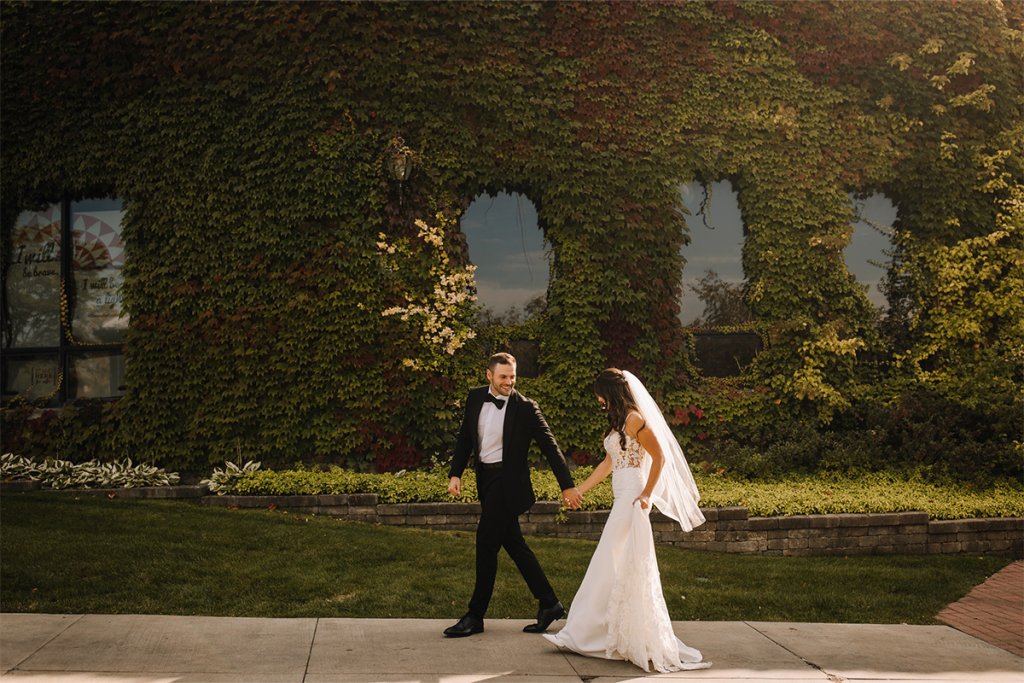From a spectacular baraat entrance to multiple wardrobe changes to the high-flying Hora dance, wedding planners reveal how to add cultural flair to your nuptials.
By: Stefania SainatoAround the World: Drinking Ceremony
Many different cultures have a tradition of the bride and groom sharing a beverage on their wedding day. One of the most fascinating is the Japanese Shinto wedding ceremony, where the bride, groom, and both sets of parents practice san-san-kudo. They each take three sips of sake from three different cups, for a total of nine sips each. It's meant to deepen the bond between the couple and the family units.
In a traditional Korean Tea Ceremony, the bride offers her groom a cup of tea first and then he offers one to her. "As a surprise, our bride had us switch his cup from tea to tequila. When he took the first sip, the look on his face was priceless!" O'Connell reveals.
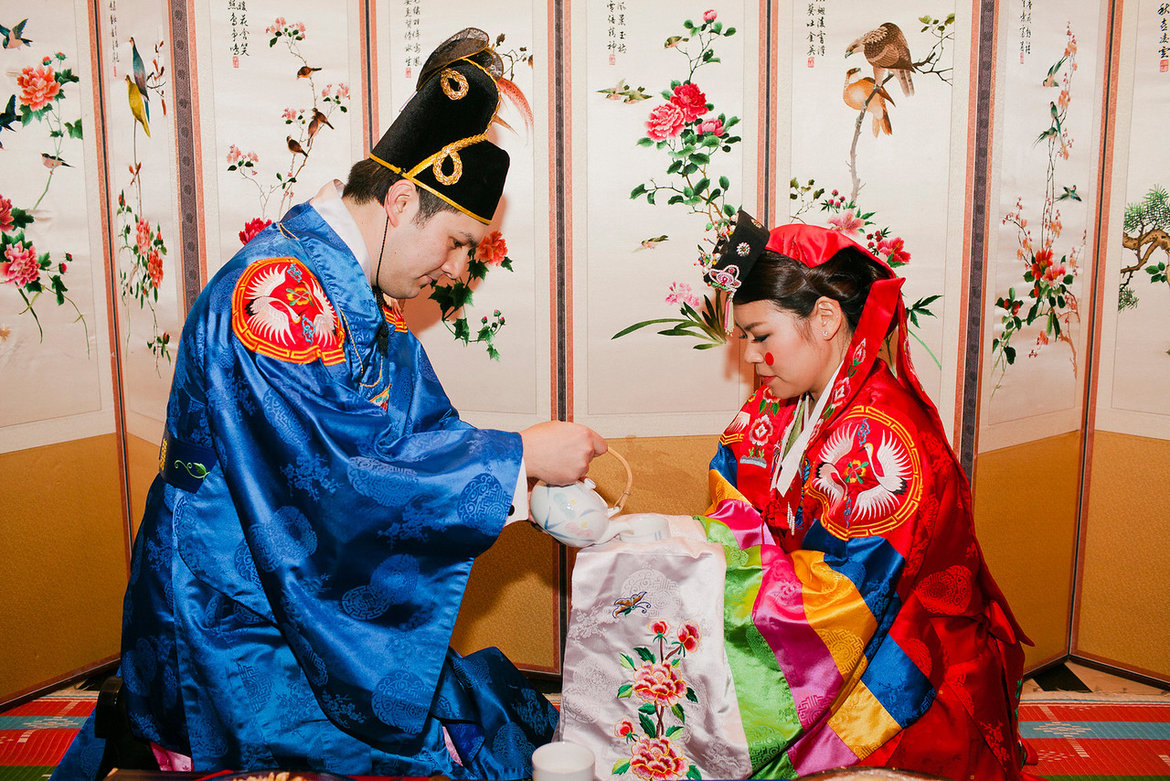
Photo Credit: Cly by Chung
In Africa, there is a Yoruba ritual where the bride and groom taste four flavors that represent the ups and downs of being married. They are sour (lemon), bitter (vinegar), hot (cayenne) and sweet (honey).
Around the World: Creative Desserts
French nuptials may include croquembouche (which means "crisp in the mouth"), a delicious alternative to traditional wedding cake. It consists of a pyramid of cream puffs covered with caramelized sugar; is your mouth watering yet? The creative concept originated from a time when guests would stack little cakes and challenge the newlyweds to kiss over the stacks without toppling them over.
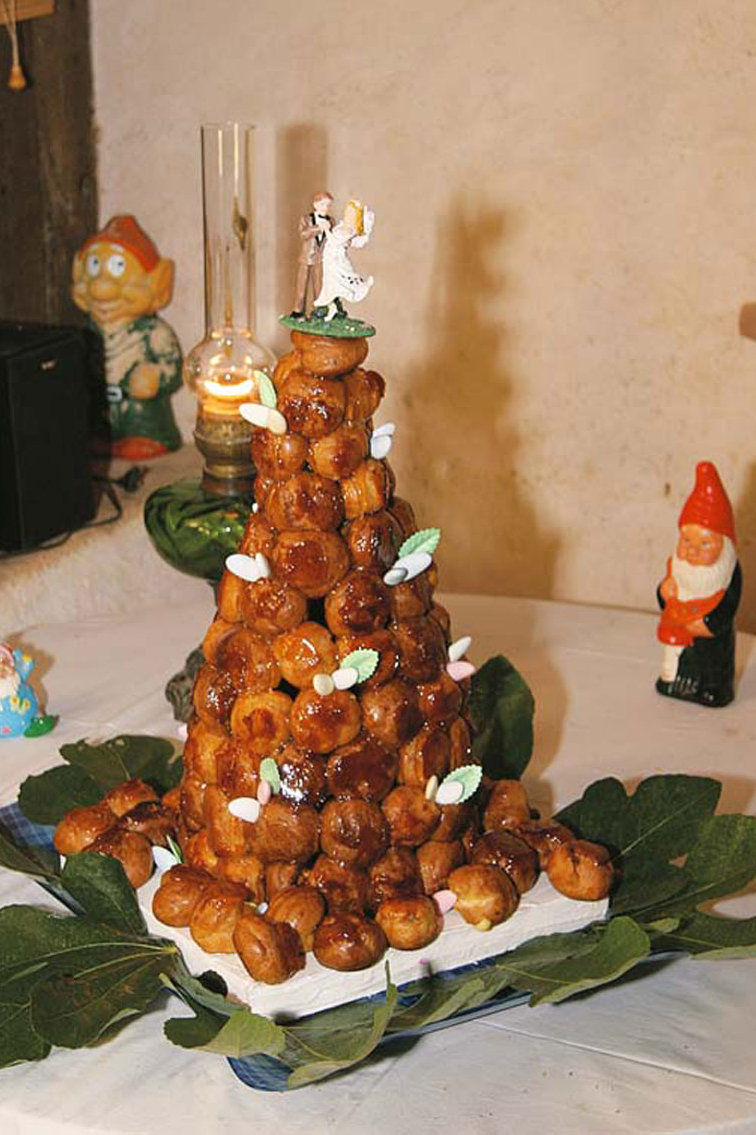
Photo Credit: Alexis Frespuech
In a traditional Irish wedding, the cake consists of two tiers. The first is a rich fruit cake. The smaller tier is soaked in Irish whiskey and stored away as a christening cake for the couple's first-born child.
Cake is an integral part of a Jamaican wedding celebration. Traditionally, the groom's grandmother soaks dried fruit in rum for the duration of the couple's engagement. Then the grandmother or mother of the bride bakes it into a cake. On the big day, the matriarchs of the village carry the cake to the venue in a procession.
In Bermuda, the bride and groom each have a cake. The bride's cake includes a small cedar sapling on top, which is replanted after the ceremony to symbolize growth. Gold leaf tops the groom's cake, which represents prosperity.
Norwegians serve kransekake, a delicious confection made of bread and topped with a mixture of cheese, cream, and syrup. It's cut into bite-sized squares.
Italians, Greeks, and some other Middle Eastern cultures serve Jordan almonds at weddings to wish the newlyweds happiness, wealth, fertility and longevity. They are usually covered in candy or sugar, and wrapped in tulle for guests to take home with them.
Peru and the South: Cake-Pulling Ceremony
Wedding charms are hidden between the layers of a wedding cake and attached with ribbons. (Each charm represents something different: a fleur-de-lis is for posterity, a ring is for marriage, an anchor is for steady love, and so on and so forth.) Before the bride and groom cut the cake, each single woman or bridesmaid pulls a string. The one who pulls the ribbon with the ring charm is the next one to marry within a year. "This is a great alternative to brides who don't want to toss the bouquet but still want to include their single friends in a fun tradition," Domino advises. Although this tradition is popular in the South, specifically New Orleans, some believe that it originated in Peru and made its way to the United States through the slave trade.
Croatia: Shots Table
A fun Croatian tradition is to have a shot table once guests arrive at the reception. Traditional liqueurs include brandy made from honey (Medica), plum (Šljivovica), cherry (Višnja), pear (Kruškovac) and walnut (Orahovac). "That way, guests can toast the couple and prepare their appetite for the feast ahead," Kolanović-Šolaja says.
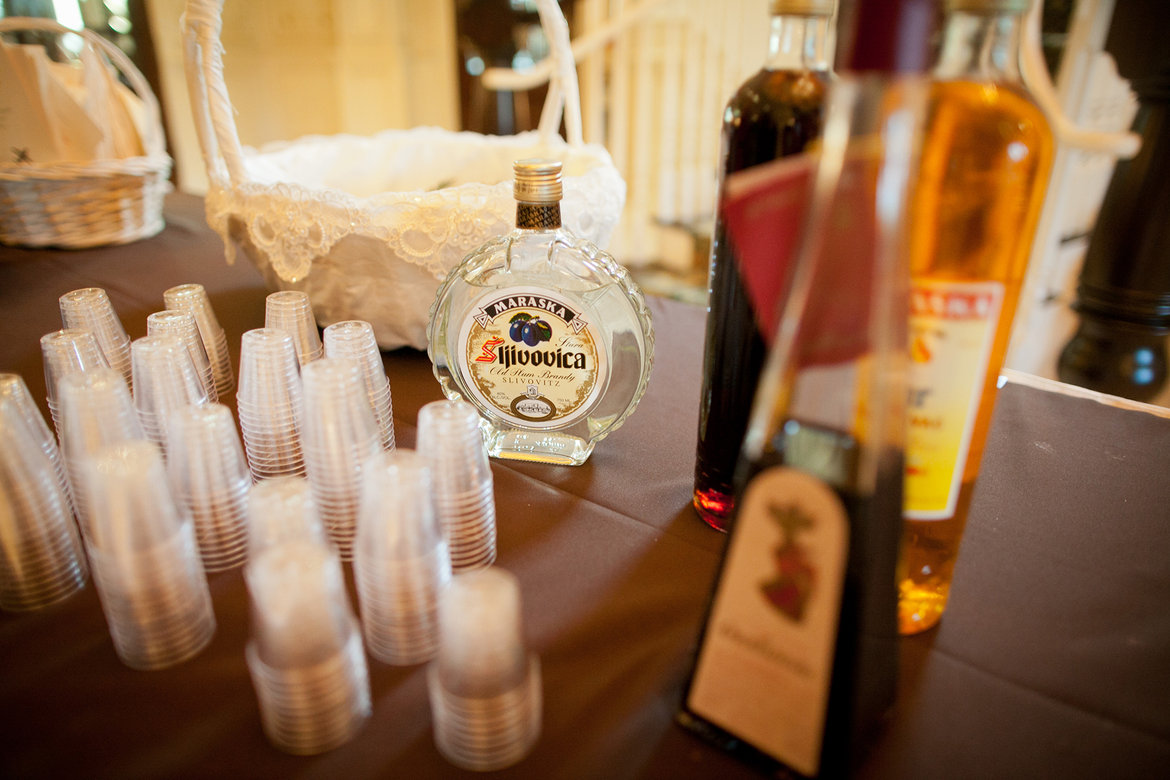
Photo Credit: Endless Wave Studios
Bonus: After the Wedding
Holland: Tree-Planting
In Holland, a pine tree is planted in front of the newlyweds' home as a good-luck omen.
Browse Cultural Wedding Traditions By Category:
► Processions
► Blessings/Rituals
► Fashion and Beauty
► Décor and Other Wedding Details
► Wedding Dances/Antics
► Food and Beverages

